The booming Soviet tourist industry in radioactive Ukraine
People are flocking to the Ukraine to learn more about the Cold War sites that could have destroyed the planet
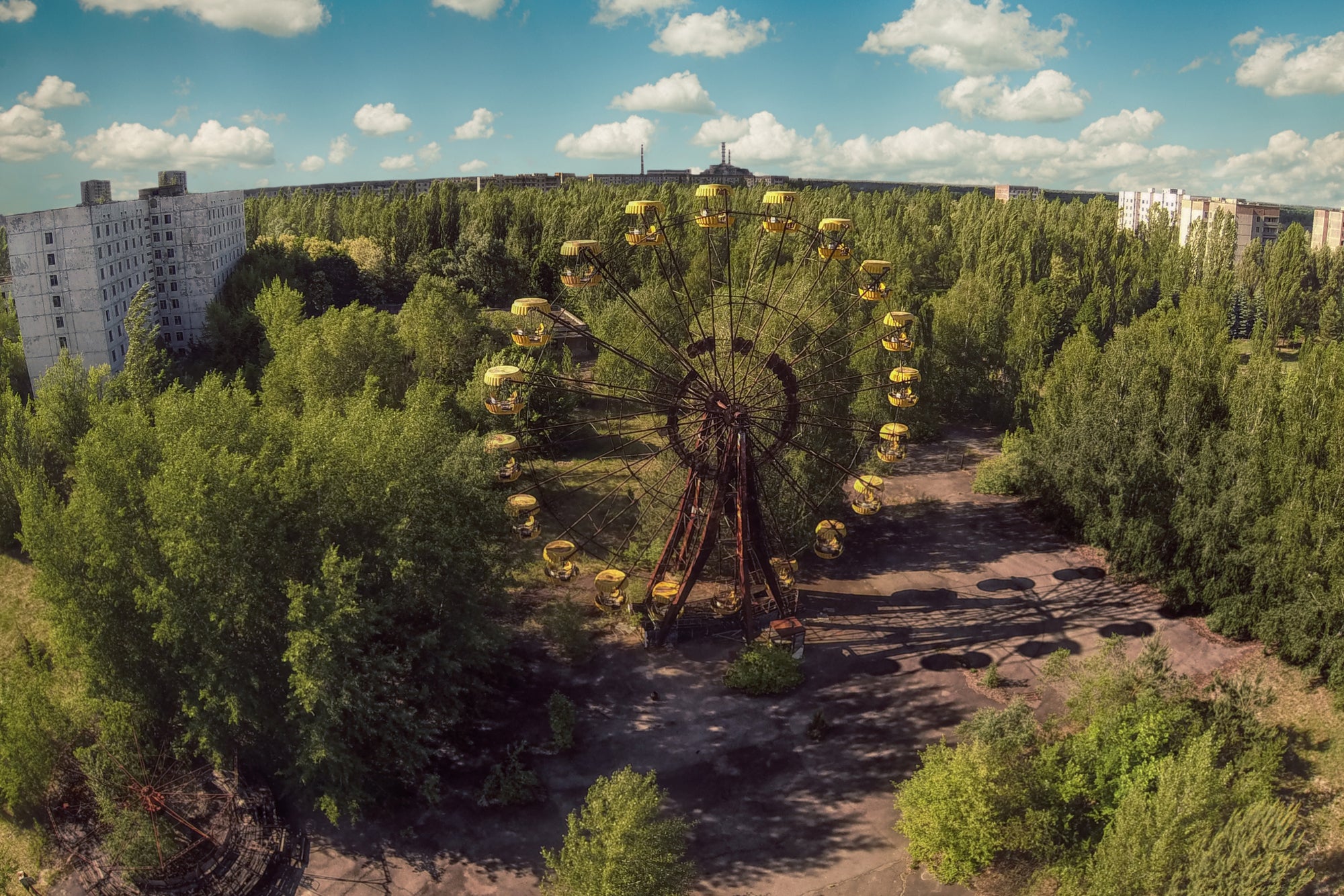
Your support helps us to tell the story
From reproductive rights to climate change to Big Tech, The Independent is on the ground when the story is developing. Whether it's investigating the financials of Elon Musk's pro-Trump PAC or producing our latest documentary, 'The A Word', which shines a light on the American women fighting for reproductive rights, we know how important it is to parse out the facts from the messaging.
At such a critical moment in US history, we need reporters on the ground. Your donation allows us to keep sending journalists to speak to both sides of the story.
The Independent is trusted by Americans across the entire political spectrum. And unlike many other quality news outlets, we choose not to lock Americans out of our reporting and analysis with paywalls. We believe quality journalism should be available to everyone, paid for by those who can afford it.
Your support makes all the difference.The button that could have started a nuclear holocaust is grey – not red.
I learned this after climbing into a nuclear rocket command silo, 12 floors below ground, and sitting in the same green chair at the same yellow, metal console at which former Soviet officers once presided. Here, they practiced entering secret codes into their grey keyboards, pushing the launch button and turning a key – all within seven seconds – to fire up to 10 ballistic missiles. The officers never knew what day their practice codes might become real, nor did they know their targets.
This base in Pervomaysk, Ukraine – about a four-hour drive from Kiev – once had 86 intercontinental ballistic missiles capable of destroying cities in Europe and the United States. Though the nuclear warheads have been removed, the command silo with much of its equipment, giant trucks that carried the rockets to the base and an empty silo were preserved so that people could see what had been secretly going on at nuclear missile bases in the former Soviet Union. The museum’s collection includes the R-12/SS-4 Sandal missile similar to those involved in the Cuban missile crisis and the RS-20A/SS-18 Satan, the versions of which had several hundred times the destructive power of the bomb dropped on Hiroshima.
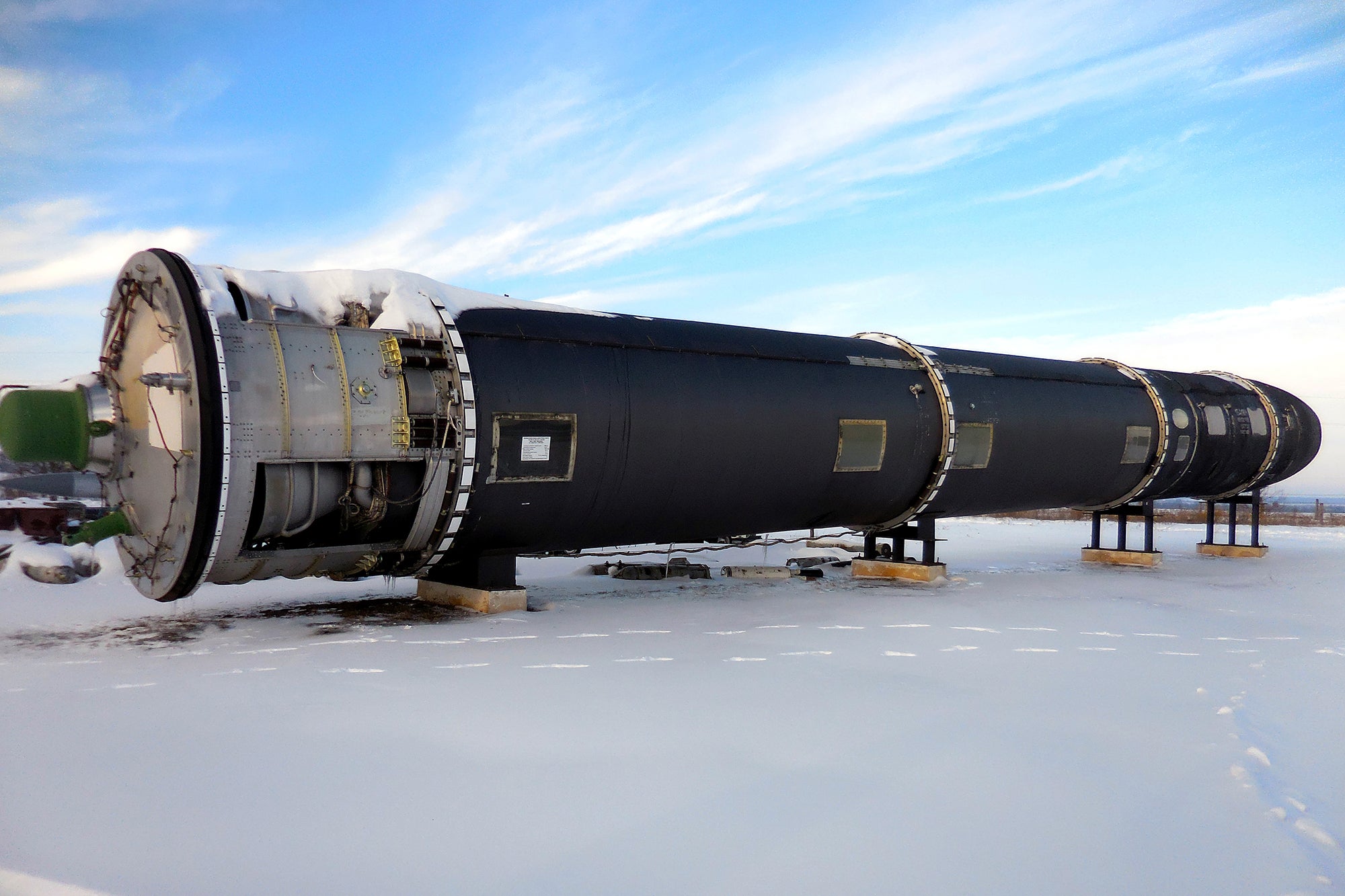
“This is what the tourists come to see,” says Igor Bodnarchuk, a tour guide for SoloEast Travel, a Kiev company that specialises in tours of Soviet ruins. “What else do we have to offer?”
Tourists go to Paris to marvel at the majesty of the Eiffel Tower, to Rome to stroll the cobbled streets of the Vatican, to Moscow to behold the magnificent domes of Red Square. And while Ukraine has its own plethora of domed cathedrals, including monasteries with underground caves, thousands of tourists are trekking to this country for a uniquely Soviet experience. Here, they stand outside an exploded nuclear reactor at Chernobyl and rifle through the remains of a nearby abandoned city – Geiger counter in hand. In Chernobyl’s shadow, they marvel at the giant “Moscow Eye”, an anti-ballistic-missile detector that rises 50 stories high and looks like a giant roller coaster.
Every day, a handful of travel companies ferry mostly foreigners to Chernobyl’s 19-mile exclusion zone. In 2016, SoloEast Travel hauled 7,500 people there, up from only one trip in 2000.
“It used to be sort of extreme travel,” says Sergei Ivanchuk of SoloEast Travel. “You were very brave to go to Chernobyl in 2000. Now, not so much.”
Ivanchuk insists that people who go to Chernobyl are not morbid. “They are intelligent people who want to learn something new, and are often interested in nuclear power,” he says.
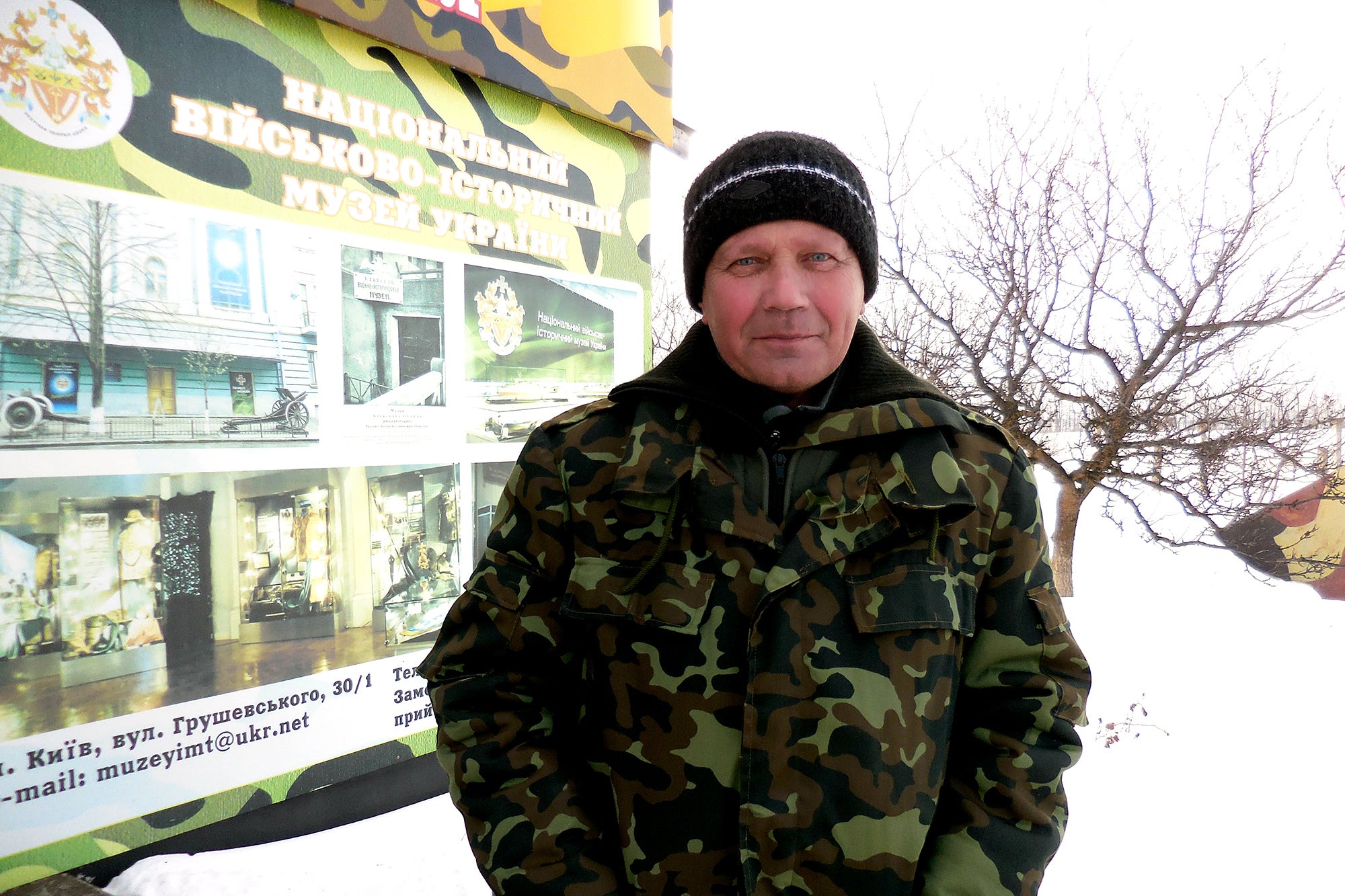
Likewise, people who venture to the missile base at Pervomaysk are interested in the Cold War. “It’s a place to remember – like the Holocaust – about a dangerous time in history and what it means to have nuclear weapons,” he says.
Earlier this year, Russia deployed a new cruise missile, apparently violating its 1987 arms-control treaty with the United States. In light of that event, the Soviet ruins in Ukraine seem all the more relevant.
The day I visit the former 46th Rocket Division in Pervomaysk, silver engines gleam in the sunlight and missiles stick out of the snow. Nearby is a surface-to-air missile similar to the one that brought down Malaysia Airlines Flight 17 over Ukraine in July 2014.
The museum tour guides are all former Soviet officers who once worked at the missile base. Ours, Gennadiy Fil’, once manned the nuclear controls. When American tourists dally, snapping photos of the rockets above ground, he barks: “Ledz go!”
Then he darts through a heavy door of a squat building, down a series of winding stairs and through an underground tunnel, navigating by memory through the narrow, 500-foot-long passageway to the control centre in a silo. The narrow cylinder is suspended from the ground – theoretically, to withstand the shock of a counterattack.
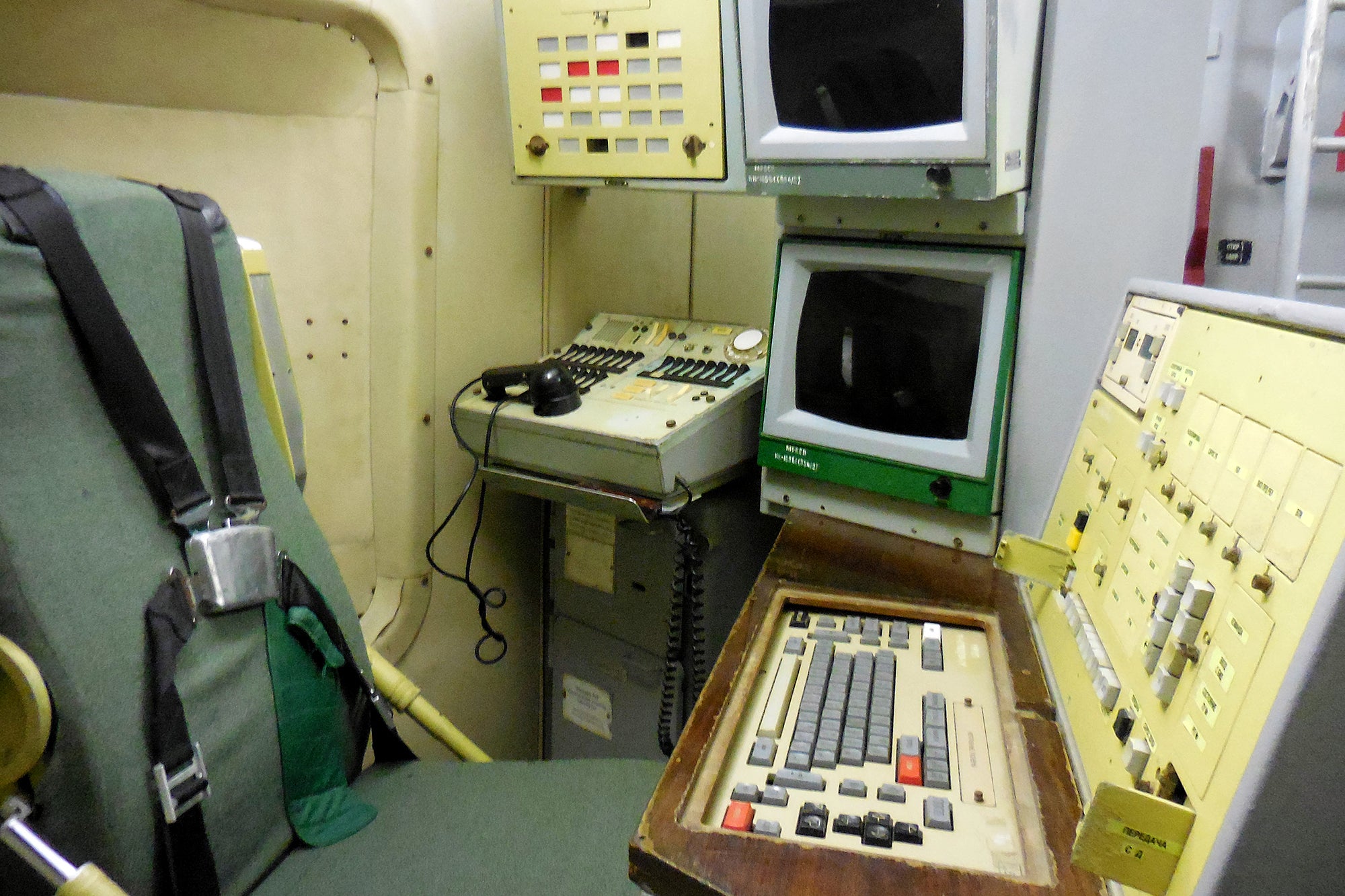
In six-hour shifts, Fil’ and another officer would descend in a tiny elevator (maximum capacity: three people) to the bottom of the silo. Stationed at metal consoles in an 11-by-11 control room, they would read secret codes from Moscow that flashed on a computer screen, then quickly tap them into a dingy yellow monitor. Then, they pressed a small, grey button and turned a key on the opposite side of the terminal to launch up to 10 nuclear rockets at once.
“You don’t launch just one missile, because the other side is going to shoot back and destroy you,” explains Elena Smerichevskaya, our Ukrainian interpreter. An intercontinental ballistic rocket fired at New York, she explains, would take about 25 minutes to hit its target.
Fil’, 55, says he never knew when he would be ordered to input real codes. It was his job, he says and shrugs. He says he had no moral objections to pushing the button. Launching nuclear missiles was a “political decision”, something that people on top of the ground decided, not him.
He admits that he was scared about the possibility of nuclear war. “You’d have to be crazy in the head not to be scared,” he says.
But just in case Fil’ or a fellow officer (two officers were required to launch a rocket) refused to push their buttons, reserve officers could be called up from a compartment beneath the control centre.
For officers like Fil’, there were both mental and physical challenges. The compartments were hermetically sealed, and Fil’ says there was immense pressure on their ears. There were also concerns about the psychological impact of being isolated in the chambers. While the Soviets kept enough food and water on hand for 45 days, some men started to become batty after only two or three days inside the silo bunker, Smerichevskaya says.
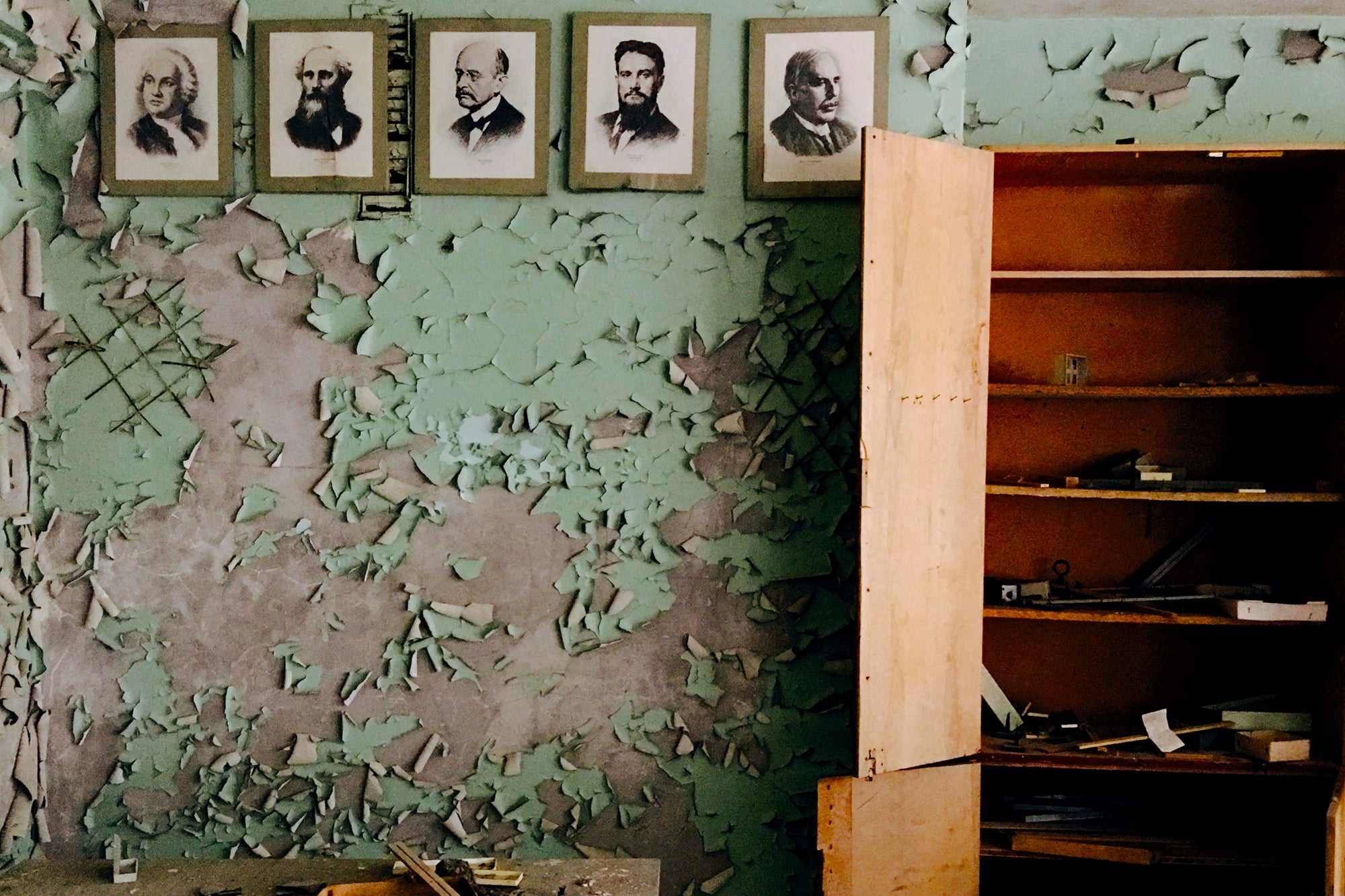
While Fil’ is glad the world didn’t implode under his watch, he says he is sad to have lost his job behind the missile controls.
In 1994, three years after Ukraine became independent, it joined the Non-Proliferation Treaty and agreed to dismantle its 1,900 Soviet missiles. At the time, Ukraine boasted the world’s third-largest stockpile of nuclear warheads after Russia and the United States. Ukraine shipped its nuclear warheads to Russia and dismantled its silos, often blowing them up or filling them with cement. The control silo at Pervomaysk was the only one spared – so it could become a museum. The 46th Rocket Division, part of the Soviet 43rd Rocket Army, was disbanded in 2001.
As a child growing up in the Cold War who was taught to hide under her school desk in case of a nuclear attack, it’s surreal to meet a man who at the same time had his fingers on the triggers of the Soviet Union’s nuclear warheads.
Fil’ shakes his head at how things have changed. “I never thought I’d be standing here talking to an American,” he says, his eyes wide with amazement. “I never thought I’d be having my picture taken. That was absolutely forbidden. And now ... it’s okay.”
The museum claims that its silos are very similar to those still in operation in Russia. The Satan is still part of Russia’s weaponry, although an improved version is set to be operational in 2018. Before Russia invaded Crimea and backed the separatists’ war on Ukraine’s eastern front, Russian soldiers frequently took their families to Pervomaysk to show them what they did at work, museum tour guides say. The missile sites in Russia remain secret.
The city of Pripyat was once a secret Soviet city, closed to anyone but workers of the Chernobyl nuclear reactor and their families. Now the city, an hour-and-a-half drive from Kiev, is a nuclear ghost town. Forty-nine thousand people were forced to evacuate the day after Chernobyl’s Reactor No 4 exploded on 26 April 1986.
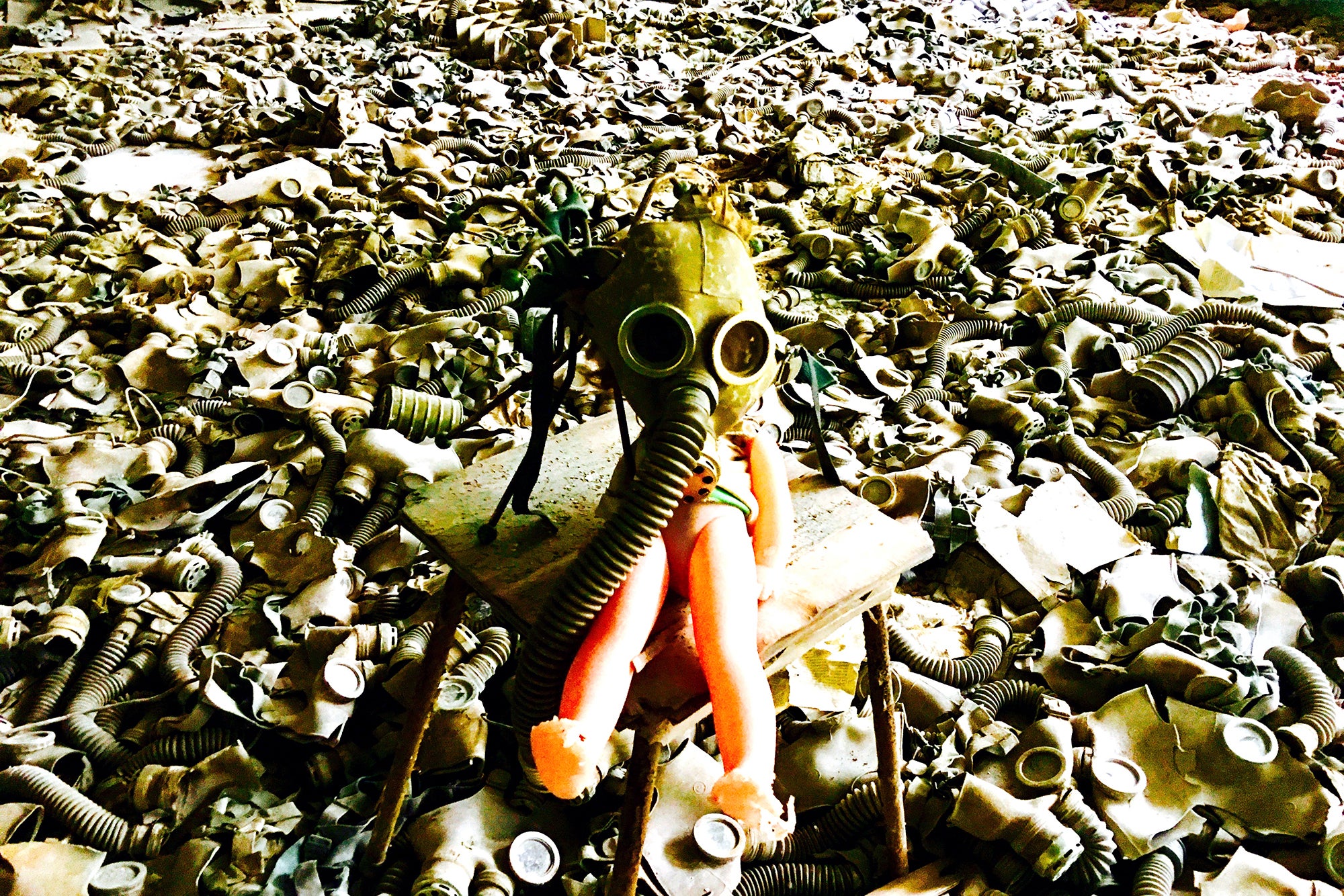
Nearly all the first responders and soldiers died from radiation poisoning while trying to contain the graphite fire and the radioactive particles spewing from the destroyed reactor, explains Bodnarchuk, our tour guide. Officially, only 31 firemen and soldiers were killed. But some believe that the disaster claimed at least 10,000 lives as wind carried radioactive material into Belarus and northern Europe.
Even though critics have said that the designs of Chernobyl are outmoded and inherently unsafe, Russia reportedly is still using 11 similar nuclear reactors.
Today, visitors can stand across the street from the damaged reactor at Chernobyl, which recently was covered by a huge, $2.3bn (£1.7bn) shield. But the highlight of the tour is, by far, the crumbling city of Pripyat. Though tour operators are warned to stay out of Pripyat’s buildings, tourists routinely stomp through the city, including the hospital where dying first responders were taken.
Tourists stick their Geiger counters against tatters of clothing in the hospital lobby and watch their machines shoot up to shockingly high levels – 85 microsieverts per hour. The normal range is 0.09 to 0.30 microsieverts per hour, according to the tour company. Most guides carry their own Geiger counters; many tourists come with their own.
Tour operators claim that a visit to Chernobyl is no more dangerous now than a flight from Ukraine to North America. This calculation includes spending 10 minutes in front of the burned-out reactor and no more than two hours in Pripyat.
SoloEast Travel has a video that shows how it came up with such mathematics. Those calculations, however, don’t factor in hovering over a firefighter’s highly radioactive clothing that has been dug up from deep in the hospital. Nor do they specifically include driving through the red forest near the Chernobyl reactor – where the radiation burned up all the trees, which were then bulldozed and buried. Our Geiger counters went crazy as we drove through the new-growth forest, registering 26 microsieverts per hour.
Our guide tried to calm fears about our exposure to radiation by assuring us that any high levels on our body would be detected by the machines we had to pass through on the way out of Chernobyl’s exclusion zone. Those machines – old Soviet steel contraptions that look like retro airport metal detectors – hardly inspire confidence.
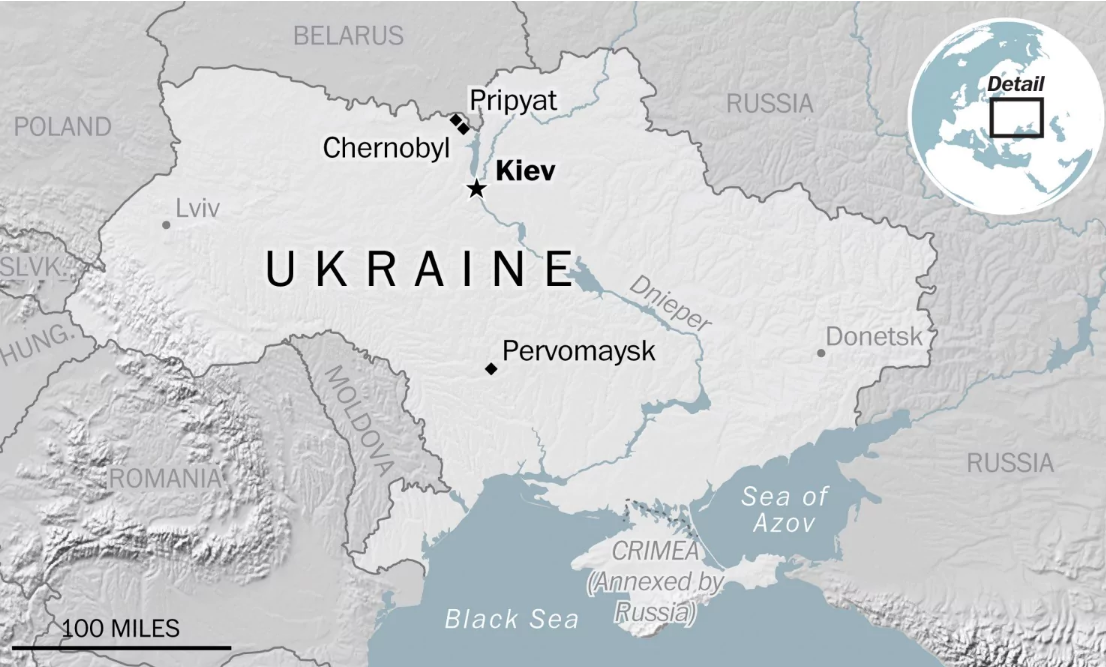
To amplify tourists’ shock, guides have embellished some of the Pripyat remains. Amid hundreds of crumbling gas masks spread over the floor of a school, a baby doll has been placed on a chair – wearing a gas mask. A hospital nursery has been outfitted with plastic dolls, placed in cribs with blankets, to make the scene appear even more macabre. Outside a village school building, old toys are scattered about. One-eyed teddy bears and dolls with missing limbs sit on bed springs at a village orphanage. Tables are set with plates and pots.
The most eerie scenes include an abandoned amusement park with its empty, lonely looking Ferris wheel and bumper cars filled with leaves; a swimming pool with cracked tiles, its deep end filled with trash and an old shopping cart; school hallways cluttered with books; school desks laid out with science experiments; posters of Lenin and other Soviet leaders adorning classroom walls; and a broken baby carriage abandoned in a decaying community centre.
Visitors are exhausted by the time their tour bus leaves Pripyat and turns down a one-lane road through a thick forest. Hiding there is the Moscow Eye, also known as the “Russian Woodpecker”, an enormous metal structure silhouetted against the sky like a vertical Stonehenge.
Using over-the-horizon radar, the Moscow Eye was the receiver for a powerful radio broadcast sent from elsewhere in Ukraine. Some say that the signal’s short, repetitive tapping noise sounded like a bird – thus the woodpecker moniker. Others say it sounded more like a machine gun. From 1976, until it went off the air in 1989, the unexplained radio signal interfered with many broadcasts. Listeners speculated that it was a method of Soviet mind control. Only in the past three years have tourists discovered its sublime metal architecture rising from the forest floor near Chernobyl, an anachronistic remnant from a not-so-distant era.
© Washington Post
Subscribe to Independent Premium to bookmark this article
Want to bookmark your favourite articles and stories to read or reference later? Start your Independent Premium subscription today.
Join our commenting forum
Join thought-provoking conversations, follow other Independent readers and see their replies
Comments